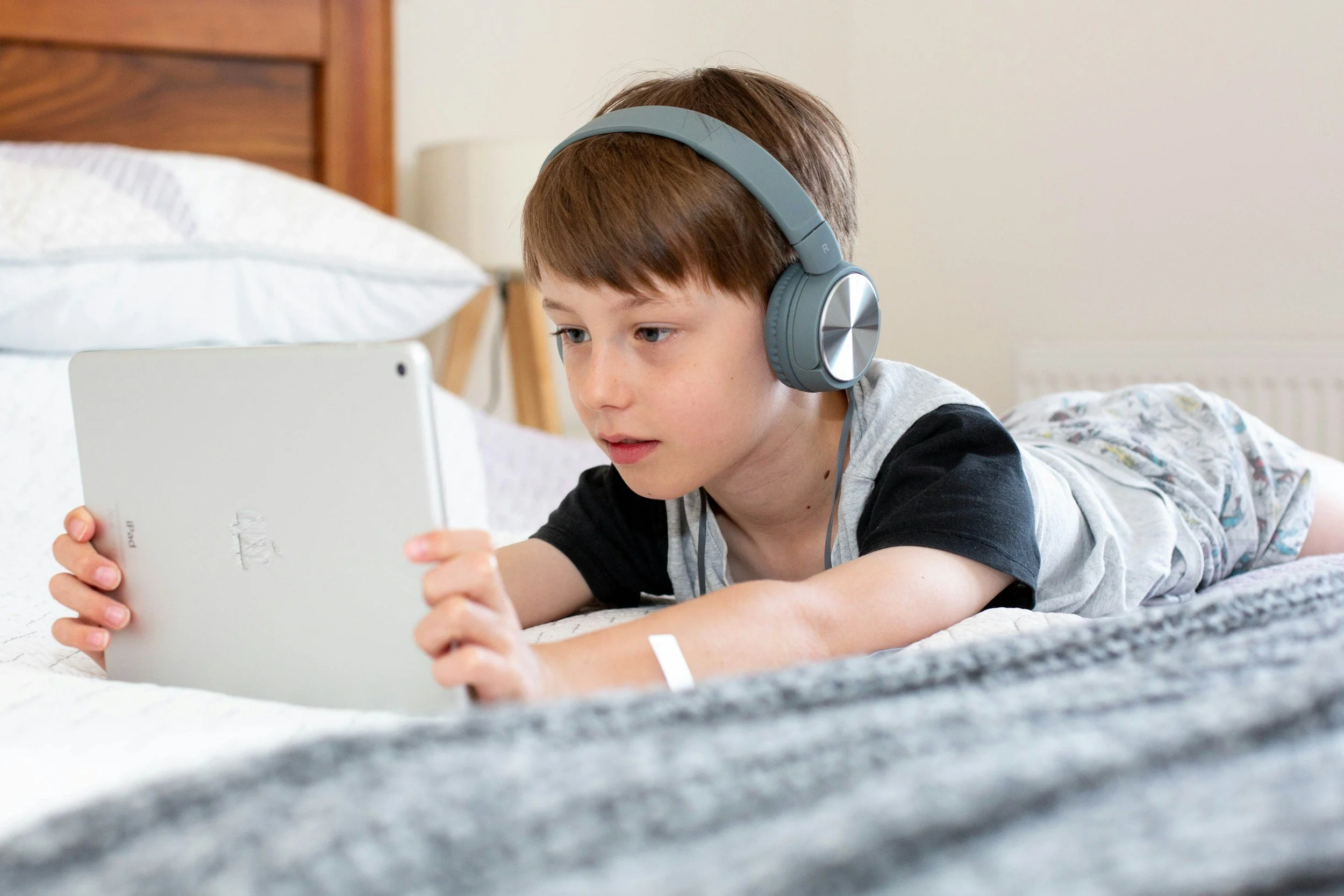The CBT Triangle:
Thoughts influence how you feel
Feelings influence how you behave
Behaviors influence what you think
For example:
Thought: "I'm going to fail this test"
Feeling: Anxious, defeated
Behavior: Avoid studying or overprepare to exhaustion
Cognitive Behavioral Therapy (CBT) in Lafayette, CA
CBT helps you interrupt this cycle by identifying unhelpful thoughts, examining the evidence, and developing more balanced, realistic ways of thinking—which changes how you feel and what you do
What Is Cognitive Behavioral Therapy?
CBT is based on a simple but powerful idea: your thoughts, feelings, and behaviors are all connected. When you change one, you can change the others.
Change Your Thoughts,
Change Your Life
Cognitive Behavioral Therapy (CBT) helps you identify and change the thinking patterns and behaviors that keep you stuck in anxiety, depression, or unhelpful habits. It's practical, skills-based, and proven effective.
How CBT Works in My Practice
While I'm trained in CBT, I typically use it as one tool among many rather than as a standalone approach. This means you get the practical benefits of CBT techniques while also addressing deeper emotional and relational patterns through other modalities.
CBT Enhanced by Other Approaches
Because I integrate multiple modalities, my use of CBT often includes:
Mindfulness to observe thoughts without judgment
Somatic awareness to notice how thoughts affect your body
IFS perspective to understand which "part" is thinking this way
Drama therapy creativity to make CBT exercises more engaging
This integration makes CBT feel less mechanical and more personally meaningful.
CBT Techniques I Use
Identifying Thinking Traps
Learning to recognize cognitive distortions—all-or-nothing thinking, catastrophizing, mind-reading, overgeneralizing—that create unnecessary distress.
Thought Records
Tracking situations, thoughts, feelings, and behaviors to identify patterns and practice more balanced thinking.
Behavioral Activation
When depression makes you want to withdraw, CBT helps you schedule activities that improve mood and counter isolation.
Exposure Techniques
Gradually facing feared situations (with support) to reduce anxiety and build confidence. Especially helpful for phobias and social anxiety.
Problem-Solving Skills
Breaking down overwhelming problems into manageable steps and developing concrete action plans.
Behavioral Experiments
Testing out negative predictions to see if they're actually true—often discovering they're not.
Relaxation and Coping Skills
Teaching specific techniques for managing anxiety, panic, or anger in the moment.

CBT Enhanced by Other Approaches
Because I integrate multiple modalities, my use of CBT often includes:
Mindfulness to observe thoughts without judgment
Somatic awareness to notice how thoughts affect your body
IFS perspective to understand which "part" is thinking this way
Drama therapy creativity to make CBT exercises more engaging
This integration makes CBT feel less mechanical and more personally meaningful.

Who Benefits from Cognitive Behavioral Therapy?
Teens and Academic Stress
Adolescents benefit from CBT because it's:
Concrete and practical - Appeals to teens who want solutions
Skills-based - Gives them tools they can use independently
Focused on real problems - School stress, peer pressure, performance anxiety
CBT helps teens challenge perfectionism, manage test anxiety, and cope with social pressures that are so intense in high-achieving areas like Lafayette and Walnut Creek.
Children with Anxiety or Behavior Issues
Modified for age, CBT helps children:
Understand the connection between thoughts and feelings
Develop coping skills for worries and fears
Build confidence through mastery experiences
Change problematic behaviors
Play-based and creative adaptations (drawing thought bubbles, using metaphors) make CBT accessible for kids.
Adults with Stress and Life Challenges
CBT is practical for busy adults dealing with:
Work stress and burnout
Relationship conflicts
Life transitions and decision-making
Insomnia and sleep issues
Anger management
You learn skills you can apply immediately to real-life situations.
Habit Change and Goal Setting
CBT techniques help with:
Breaking unwanted habits
Building new routines
Overcoming procrastination
Achieving specific behavioral goals
If you have a concrete problem you want to solve, CBT's structured approach can be very effective
Anxiety Disorders
CBT is highly effective for:
Generalized Anxiety Disorder (GAD) - Chronic worry and "what if" thinking
Social Anxiety - Fear of judgment or embarrassment
Panic Disorder - Understanding and managing panic attacks
Phobias - Gradual exposure to reduce fear
OCD - Combined with exposure and response prevention
CBT gives you concrete tools to interrupt anxiety spirals and challenge catastrophic thinking.
Depression
CBT helps with depression by:
Identifying and challenging negative thought patterns
Increasing activities that boost mood
Breaking cycles of withdrawal and rumination
Developing coping skills for difficult emotions
Building a sense of accomplishment and capability
Research shows CBT is as effective as medication for mild to moderate depression, and combining both is even more effective.
Test and Performance Anxiety
Challenging catastrophic thoughts about outcomes
Developing study and preparation routines that reduce anxiety
Using relaxation techniques before and during tests
Building confidence through small successes
Particularly relevant for teens in competitive academic environments.
Social Anxiety
Identifying and challenging thoughts about being judged
Gradual exposure to social situations
Developing conversation skills and confidence
Reducing safety behaviors that maintain anxiety
Insomnia and Sleep Issues
CBT-I (CBT for Insomnia) techniques
Addressing racing thoughts at bedtime
Establishing healthy sleep routines
Reducing sleep anxiety
Perfectionism
Recognizing all-or-nothing thinking
Setting realistic standards
Tolerating "good enough"
Reducing fear of failure
Very common in high-achieving Bay Area families.
Anger Management
Identifying anger triggers and warning signs
Challenging thoughts that fuel anger
Developing healthier communication skills
Using time-outs and cooling strategies
CBT for Specific Issues
My Integrated Approach: CBT Plus
While CBT is powerful, I find that combining it with other approaches creates more comprehensive healing:
CBT + Mindfulness
Mindfulness helps you observe thoughts without getting caught in them, making CBT's cognitive work more effective.
CBT + Somatic Therapy
Noticing how thoughts affect your body and using body-based techniques to shift emotional states enhances CBT's impact.
CBT + IFS (Internal Family Systems)
Understanding which "part" of you is thinking negatively helps you work with thoughts more compassionately rather than just trying to change them.
CBT + Family Systems
Examining how family patterns and roles contribute to thought patterns and behaviors creates deeper, lasting change.
This integration means you get practical CBT skills while also addressing underlying emotional and relational issues that pure CBT might miss.
Initial Sessions
Understanding your specific challenges
Identifying patterns in your thoughts, feelings, and behaviors
Setting concrete, achievable goals
Learning the CBT model
Ongoing Sessions
Working on specific techniques relevant to your goals
Practicing new skills in session
Reviewing homework and real-life applications
Troubleshooting obstacles
Celebrating progress
Between Sessions
CBT involves active practice outside therapy:
Thought records or journaling
Behavioral experiments
Practicing new skills
Gradual exposure exercises
Building new habits
The more you practice, the faster you'll see results.
Timeline
CBT is generally time-limited and goal-focused. Many people see improvement in:
4-8 weeks for specific, focused issues
12-20 sessions for more complex challenges
Ongoing maintenance for long-standing patterns
Because I integrate CBT with other approaches, our timeline may be more flexible, focusing on what works best for you.
What to Expect in CBT-Informed Therapy
CBT Online: Does It Work?
Research shows CBT is highly effective online—sometimes as effective as in-person therapy. Online CBT therapy offers:
Structured approaches translate well to video sessions
Easy sharing of worksheets and resources
Practice in your environment where you'll use the skills
Flexibility for busy schedules
I've successfully delivered CBT-informed therapy online to clients throughout California.
CBT vs. Traditional Therapy: What's the Difference?
Traditional psychodynamic therapy:
Explores past experiences and unconscious patterns
More open-ended and exploratory
Focus on insight and understanding
CBT:
Focuses on present thoughts and behaviors
Structured with specific goals and homework
Skills-based and practical
Time-limited
My approach combines both:
CBT skills for immediate relief and practical tools
Deeper exploration when helpful for lasting change
Flexibility based on what you need

Common Questions About CBT
Common Questions About CBT
Will CBT ignore my feelings?
Not at all. While CBT is practical and skills-focused, it doesn't dismiss emotions. We work with feelings as part of the thought-feeling-behavior cycle.
Is CBT just "positive thinking"?
No. CBT isn't about thinking positively—it's about thinking realistically and accurately. We challenge both negative AND overly positive distortions.
What if I've tried CBT before and it didn't work?
CBT can feel too mechanical or surface-level for some people, which is why I integrate it with other approaches. My drama therapy background also makes CBT exercises more creative and engaging.
Do I have to do homework?
Practice between sessions makes CBT more effective, but we'll find approaches that work for your life. Even small practice makes a difference.
Can CBT help with deeper issues or just symptoms?
CBT is excellent for symptom relief, and that relief often allows space for deeper work. I combine CBT with other approaches for comprehensive healing.
Why Choose CBT-Informed Therapy in Lafayette?
The Bay Area's high-achieving culture can create thinking patterns that fuel anxiety and stress:
Perfectionism ("Anything less than perfect is failure")
Catastrophizing ("If I make one mistake, everything will fall apart")
Should statements ("I should be working harder/achieving more")
Comparison ("Everyone else has it together except me")
CBT helps you recognize and challenge these patterns that are so prevalent in competitive environments.
Additionally, Lafayette and Walnut Creek families often appreciate CBT's:
Evidence-based approach - Research-backed effectiveness
Efficiency - Results often seen relatively quickly
Practical focus - Skills you can use immediately
Goal-oriented - Clear progress toward specific outcomes
Getting Started with CBT-Informed Therapy
Whether you want focused CBT for a specific issue or a more integrated approach that includes CBT techniques, I'll tailor our work to your needs.
I offer a free 30-minute consultation to discuss:
Your specific challenges and goals
Whether CBT techniques would be helpful
How I integrate CBT with other approaches
What to expect in our work together
Practical details about online therapy

Related Services
Anxiety Therapy - CBT techniques for worry and panic
Teen Therapy - Practical skills for academic and social stress
Depression Treatment - Behavioral activation and cognitive restructuring
Child Therapy - Age-appropriate CBT techniques
Other Approaches
Internal Family Systems (IFS) - Working with parts compassionately
Somatic Therapy - Body-based techniques combined with CBT
Mindfulness-Based Therapy - Observing thoughts mindfully
Family Systems Therapy - Addressing relational patterns
Ready to develop practical skills for anxiety, depression, or life challenges?
Contact me to schedule your free consultation.
Offering CBT-informed therapy online for clients in Lafayette, Walnut Creek, Orinda, Moraga, and throughout California.







